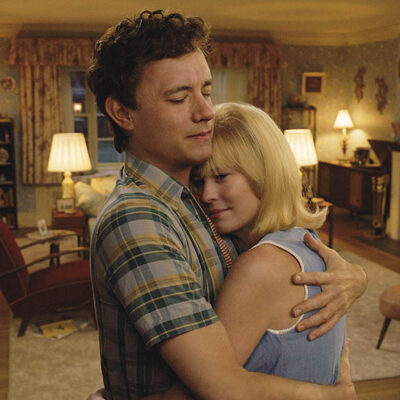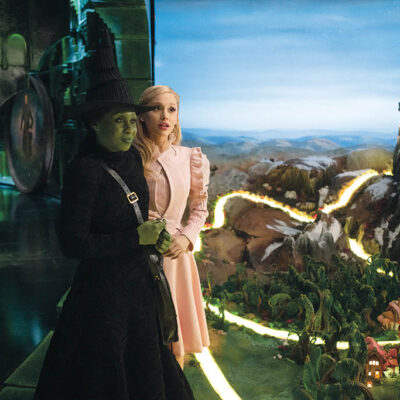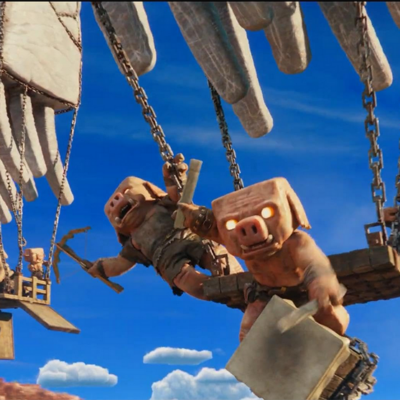All throughout the live-action shoot, Buck’s on-set presence was simulated in a variety of ways, ranging from a gray life-sized cutout to Mesmerize, a living canine. “Mes was a very close match to our intended color for the CG dog,” remarks Stafford, “so seeing the real dog in different lighting scenarios was very important reference. Of course, as Murphy’s Law would have it, that color for our CG dog changed later. We used traditional gray and chrome ball lighting reference passes, too. There’s always a learning curve with a movie character not physically on the set. It’s very hard to get everybody paying attention to the zone the dog is supposed to be occupying and passing through. When you’ve got 200 extras in a scene, having somebody there holding down that space is very important.”
Enter movement choreographer Terry Notary. “We knew Terry from the Apes movies,” Stafford continues. “He performed all the mannerisms and characteristics of a dog, including running and trotting, that would drive performance as well as camera movement. For intimate moments with dog and human in close proximity, maybe touching foreheads, Terry wore what looked like a big giraffe nose made out of wetsuit material to represent Buck’s muzzle. The emotionality you get from Terry is just fantastic, he lays it all out. If he’s told to act like a dog and then cry, that is exactly what he will do, with the most heartfelt meaningful performance you’ve ever seen, even while wearing green pajamas, arm extensions and other weird apparatus. He’s such a pro, which in turn made our actors’ work so much better, miles better than acting against a tennis ball. We put Terry in wherever we could, knowing we were going to eat it on the cleanup and the matters of intersection because the gains were so great.”














































